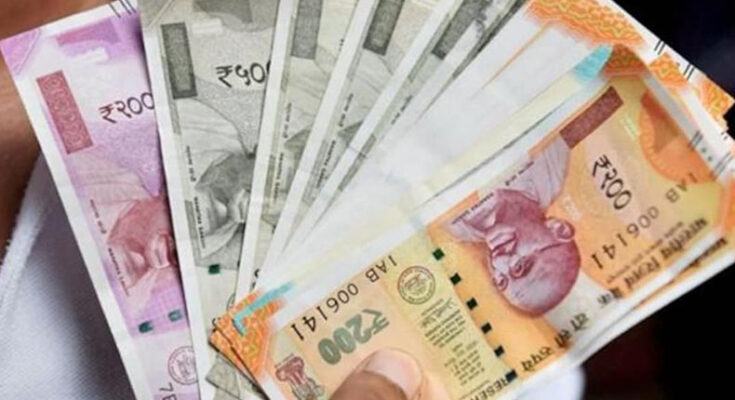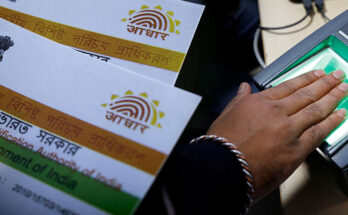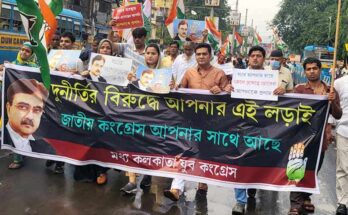Currency notes in India – people are still facing problem since demonetization. Image Courtesy – India Today
Nishit Acharya goes to buy milk, vegetables, and a few essentials with Rs 2000 notes and nobody is ready to accept that as they don’t have to pay back.
Look at another story, Bhavna Ahuja just gets out from the bank with Rs 2000 notes and goes to take a meal from a hotel nearby. In the meantime, her phone is showing a low battery and gets switched off. She offers Rs 2000 cash for a meal but they refuse to accept it as they won’t have the change. This is a common picture unless you are going to some 5-star hotels.
Four and a half years ago, Prime Minister Narendra Modi appeared on TV and said all Rs 500, Rs 1000 notes will turn invalid. There were three main economic purposes of demonetization – fighting black money, fake notes, and making a cashless economy by pushing digital transactions.
But, did demonetization achieve those targets?
What has happened in reality?
Reserve Bank of India has introduced the new 2,000 notes after the demonetization of Rs 1,000 and Rs. 500 notes. Getting a change of 2,000 notes is becoming a problem though Government has no strategy to withdraw Rs 2000 notes. In the middle of combating corruption and black money, this move also instigates much short-term pain and chaos for the working class, small businesses, and anybody who deals with cash daily.
There is no proposal to reintroduce the Rs 1000 note. Modi’s decision to withdraw Rs 500 and Rs 1,000 notes should preferably not hurt most beings in the long-term, although it has an important negative impact on the working class such as drivers, maids, cooks, electricians, plumbers, and small and rural businesses in the short-term.
Why? One obvious instance, if you had planned on paying your maid or cook tomorrow and you are not able to beat the ATM queues or have sufficient smaller-value notes lying around the house, they should hold on to be paid until you can get your hands on some cash.
Read: Why so many identity cards are required in India?
Rs 1000 notes were used extensively in the market. With a ban on currency notes in India, a collapse in the market is inevitable. The objective for which this was done is praiseworthy but the same cannot be said about the method of execution. Looking at the Indian economy, it should have been more thoughtful in terms of how to go about it. That’s all I can say in the current situation.
People still prefer to deal in cash to a large extent even though there is an increase in digital transactions. Digital India failed because of the lack of digital knowledge and awareness among the people. When more than a quarter of the populace doesn’t even know how to use mobile, how can we expect online money transactions, net banking, or online shopping kind of things from them? And, due to the ban of Rs.1000 currency notes in India create a much issue in dealings. Businessmen still transact in large amounts in cash-only and the non-availability of large amounts of easy-cash generates great issues to them and also to the common people.
Also, another key issue is internet connectivity which is one of the lowest in the world. Without connectivity, the efficiency of digital services is enormously compromised. Lack of language and digital mastery in using technology to access and use information is another problem.
Making India Digital is like building a multi-story building without any groundwork. Meaning individuals are not educated enough on how to use Digi-money or services. For this, individuals need to get educated and individuals need to get digitally educated.
You may see, even individuals with good educational qualifications are not using digital services, because they don’t know how to use them. Every day are getting news like online bank scams, ATM cons, and so on. So, how come you expect common folks use it?
So the program should start first in literate states or cities, and before that public needs to know how simple is its facilities and much secure it is. That’s why a great idea like Digital India is ineffective in most states at the present. I think education upon this should start from our schools and colleges.
A global study by McKinsey and Facebook discovers that India has one billion populaces without internet access. The reports suggest that the main obstacles in internet access in India are the same as the matters facing the nation now – literacy, poverty, and poor infrastructure. The high literacy rate acts as a key blockade in escalating the reach of the Internet. Awareness about the Internet and the skill to operate a smartphone is low among Indians.
Final Takeaway, Cashless is still a fantasy to many Indians. Individuals of this country are still suffering from a lack of conviction. The development of any country cannot be decided by the rules and regulations sanctioned in it, but the rules and regulations precisely followed by its residents. Work on such a great scale needs a lot of effort and support, which is missing and hence the problems.





